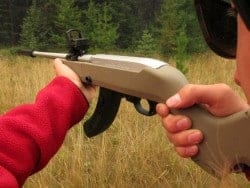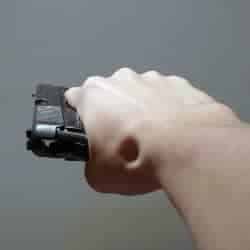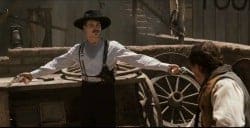Hollywood is an easy target for the teaching of poor to impossible gun skills. The number of errors and impossibilities in any gun-filled movie gives the general population a wildly
But all that comic book action can be a good thing. Here are seven wonderful misconceptions that are sure to take the neophyte gun owner into bad territory when it really Hits the Fan.
- The pre-shot pause: Most movies build tension during an armed conflict through dialog and well planned pauses. What that teaches is indecisiveness and introspection at the absolute wrong moment. When a couple of cowboys with antique wheel guns are squaring off fifty feet apart there is a poker-faced dance taking place. Not just draw speed but also hipshot accuracy. But in a true survival situation, Magpul got it right with its unfair advantage catch phrase. No reason level a tilted playing field by a calling time out. Act fast and without discussion.
- The lack of aiming: This fallacy hardly needs explanation. It’s misfires on two fronts. First is the wildly skewed probability of a successful hit that Hollywood encourages.
- The bottomless supply of ammo: Usually the easiest criticism of any Hollywood gunplay, the belief in endless ammo is pretty common. Outside of Dirty Harry counting his shots, most shooters have no idea how many bangs went bang and most importantly how many bangs have yet to go bang. Add some stress to the poop salad and who’s counting? Right, nobody. So plan accordingly because they aren’t.
- Weightless guns: Anyone who has really carried a long gun around for any length of time knows that the weight and size of the rifle makes a difference on what you can do and where you can go. Not many of the untrained can run through a forest with a rifle, nor tread water let alone swim while carrying a useful firearm even if the stock is made of wood. Walking from pickup to range table is not a workout. Ten hours of stalking during a mountainous hunt is a good start. Even after a couple hours of carrying around your rifle I can guarantee that you will want to set it down no matter how much you think you love it.
- Easy long shots: Whether a headshot from 200 yards while standing in a row boat (Bob Lee Swagger) or knocking a helicopter out of the sky with a .380 (James Bond) or bouncing a metal bucket at a quarter mile with a Sharps rifle, (Matthew Quigley), taking time to aim can make an accurate shot possible, but still unlikely. The movie Shooter did put an opposite spin on this theme as well by making a long shot seem superhuman. So illusive in fact that only a few snipers on earth could do it. In reality only a few snipers on earth are ever given the training and opportunity for a verified quarter-mile plus shot, but anyone with a bit of money, time, skill and a wide open space can ding steel at a thousand yards.
- Loud but not too loud: It would really a be a downer if the good guys always went deaf during a shootout. In reality there would be very little dialog following gun fire. Just a lot of confused looks and bleeding ears. Now double all that when shooting inside a car. Triple it when shooting next to someone’s head. In real life, guns are absolutely silent until they’re not. And when they are not, gunfire is one of the loudest things anyone ever encounters in life. That fact is hard to portray in the movies, and really is a buzzkill for plot lines. Actual gun loudness is ignored. Perhaps that’s why silencers are so common in movies. It’s a Star Trek fix to an obvious physics problem.
- Faith in bad shots: The film vaults in Hollywood are stuffed full of movie footage where thousands of rounds zinged back and forth with not a meat hit in sight. There’s
We all owe Hollywood a collective thank you for planting the seeds of misconception in the general population. Tactical advantages are where you find them. Long before Hollywood, about the fifth century BC to be exact, Sun Tzu penned (or penciled, or scratched or whatever the heck they did back then) that letting the enemy believe the world is what it seems is truly an Art of War.
“Engage people with what they expect; it is what they are able to discern and confirms their projections. It settles them into predictable patterns of response, occupying their minds while you wait for the extraordinary moment — that which they cannot anticipate.”





